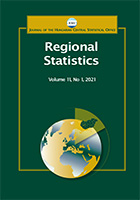The impact of a low-cost airline’s flights on local economy – On the example of Cluj-Napoca International Airport (Romania)
The impact of a low-cost airline’s flights on local economy – On the example of Cluj-Napoca International Airport (Romania)
Author(s): Tamás Dusek, Miklós LukovicsSubject(s): Social Sciences, Economy, Geography, Regional studies
Published by: Központi Statisztikai Hivatal
Keywords: impact analysis; economic impact; low-cost airlines; airport; airline
Summary/Abstract: Aviation is paramount in contemporary medium and long-distance transport, and airports are essential junctions in the modern globalised economy. The presence of airports is determinative concerning local regions or areas, and a specific methodology demons-trates its impact on the economy. It allows estimating the direct, indirect, and consequent multiplicative effect of the presence of airports on employment and income more accurately. Thus, it numerically describes the economic significance of certain airports as well. It is not only about quantifying the significant impact of an airport on the local economy; it should also be the extent to which an airline’s presence impacts regional and local economic processes. Besides analysing general methodological issues concerning the impact analysis of airports, this study aims to evaluate the impact of a particular low-cost airline’s flights on the local economy. The basis of our study is the Cluj Avram Iancu International Airport (CLJ) of Cluj-Napoca, Romania, and its dominant airline Wizz Air, which has a distinct impact because of its distance from large international airports. Thus, we can conclude that as a net result at the regional level, the presence of Wizz Air’s Cluj-Napoca flights generates over 4,000 person employment impact besides about 54 million euro income impact on the local economy.
Journal: Regional Statistics
- Issue Year: 12/2022
- Issue No: 04
- Page Range: 132-151
- Page Count: 20
- Language: English

